- Culinary
- Signature Dishes

Central Business District (Photographed by Chen Yingjie)
[Quanzhou Cuisine: One County, One Signature Banquet] Quanzhou is a city rich in culinary traditions. Whether strolling through its ancient alleys lined with historic relics or exploring its vibrant modern districts, one is always greeted by delightful aromas. Regardless of social status, a common local greeting remains "Have you eaten?" (in Minnan dialect: "食未?"). Food is central to social interactions, with conversations often concluding over a shared meal. This deep-rooted food culture has given rise to a dazzling array of delicacies, attracting gourmet enthusiasts from around the world.
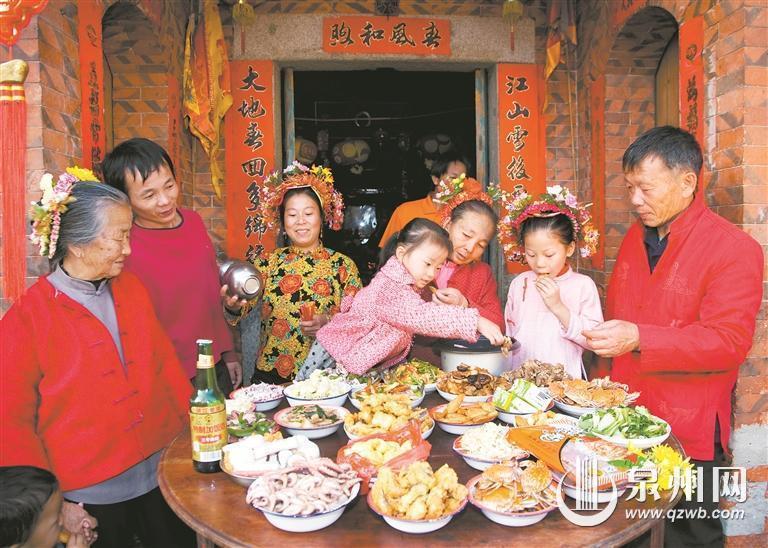
Traditional Xunpu New Year's Eve Feast (Photographed by Chen Yingjie)
[Fengze "Zanhua Banquet"] More than a thousand years ago, Cituo Port in Quanzhou was a bustling maritime trade hub. It was not just a Silk Road, Tea Road, or Porcelain Road—it was also a Gastronomic Road. As goods from across China arrived at this port, so did flavors from different regions, blending over centuries to create Quanzhou's distinct culinary identity.
Established in 1997, Fengze District is named after the Song Dynasty's "Fengze Doumen" water project, symbolizing prosperity and well-being. It is home to national cultural heritage sites such as Qingyuan Mountain, Dongchan Southern Shaolin Temple, and Haiyin Temple, as well as the UNESCO-listed "Xunpu Women's Traditions."
Walking through the oyster-shell houses of Xunpu, one feels transported through time, sensing the indomitable spirit of Minnan seafarers. The hardworking Xunpu women, daughters of the sea, live in rhythm with the tides, their elaborate floral hairpins symbolizing nostalgia, the yearning for home, and dreams of a better life. This floral adornment, dating back to the Song-Yuan era, embodies Quanzhou's enduring maritime heritage and represents Fengze's vibrancy, hospitality, and aspirations for the future.
Rooted in the mountains and embracing the sea, Fengze's "One County, One Banquet" initiative has resulted in the creation of the "Zanhua Banquet." Inspired by the maritime culture of the Song and Yuan dynasties, the banquet's dishes reflect the resilience of seafarers, the triumph of a bountiful harvest, and the changing landscapes of red-brick heritage homes. This culinary tradition strengthens Quanzhou's bid to become a UNESCO City of Gastronomy, further cementing its reputation as a world-class food destination.
Menu
Appetizers
Jasmine-Scented Pickled Radish
Elegant and Classic Fortune Liver
Blossom Jellyfish
Fragrant Sweet Potato Delight
Verdant Pine Nut Pork
Main Courses
Bountiful Harvest Barley Abalone
Moonlit Honey Shrimp
Xunpu's Four Treasures: Frozen Seafood Selection
Riding the Waves: Squid Ink Delicacy
Song-Yuan Heritage Clay-Roasted Chicken
Stewed Beef with Chinese Herbs
Radiant Tea-Oil Pork Tripe
Masterfully Braised Duck in Wine
Vibrant Yam and Betel Ice Crystal Taro
Nostalgic Treasure Hotpot
Lemon Fish
Aromatic Orange Eel
Classic Scallion Oil Abalone
Delicately Braised Mixed Fish
Baked Clams
Local Snacks
Oyster Village Street Snacks
Honeycomb Jujube Treat
Lucky Salad Rolls
Fragrant Oyster Omelette
Staples
Yunlu Bean Noodles
Five-Grain Prosperity Dumplings
Signature Handmade Longevity Noodles
Soups
Dancing Golden Croaker Soup
Mazu's Deep-Sea Pilgrimage Broth
Mountain-Sea Sunset Medley
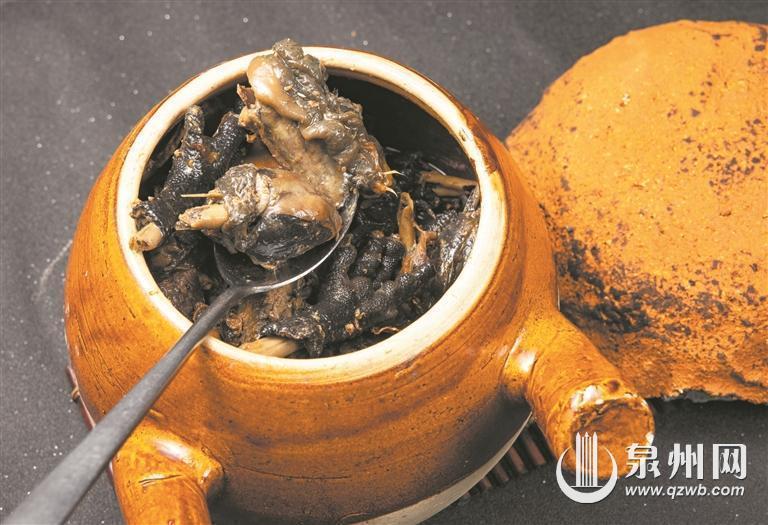
Clay-Roasted Chicken (Song-Yuan Heritage)
During the Song-Yuan era, Quanzhou was the world's largest port, hailed by Marco Polo as the "Bright City." Culinary traditions from this era have been passed down through generations, reflected in dishes that blend simplicity with sophistication. The Song-Yuan Clay-Roasted Chicken revives this heritage using premium free-range black-bone chicken from Qingyuan Mountain, organic ginger, and camellia oil, slow-cooked in a sealed clay pot. The result is tender, aromatic meat with exceptional nutritional value, making it a prized dish for seasonal nourishment.
Main Ingredients: Black-bone chicken, aged ginger, camellia oil, lotus seed pods.
Traditional Cooking Method: Chicken is cut into pieces and stir-fried with ginger and camellia oil. After seasoning with aged rice wine, it is sealed in a clay pot and slow-cooked over charcoal. Fresh lotus pods are added before serving.
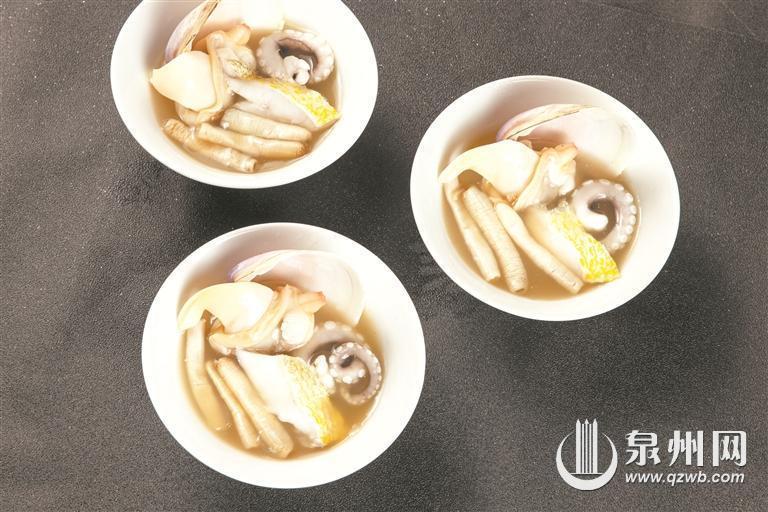
Frozen Seafood Selection (Xunpu's Four Treasures)
Xunpu, a historic fishing village along the Maritime Silk Road, carries the legacy of seafarers who lived in harmony with the sea. The "Xunpu's Four Treasures" Frozen Seafood dish innovates upon the traditional "Tusen Jelly" by combining locally sourced seafood and seaweed-infused broth. The dish embodies the essence of a bountiful catch, offering a refreshing, nutritious delicacy perfect for warm climates.
Main Ingredients: Locally sourced yellow croaker, long-legged octopus, Xunpu's native shellfish, sandworms, seaweed extract.
Traditional Cooking Method: Cooked seafood is placed in bowls, then immersed in a collagen-rich seaweed broth. Once cooled, it solidifies into a delicate jelly. Served chilled with mustard soy sauce and garlic dressing.
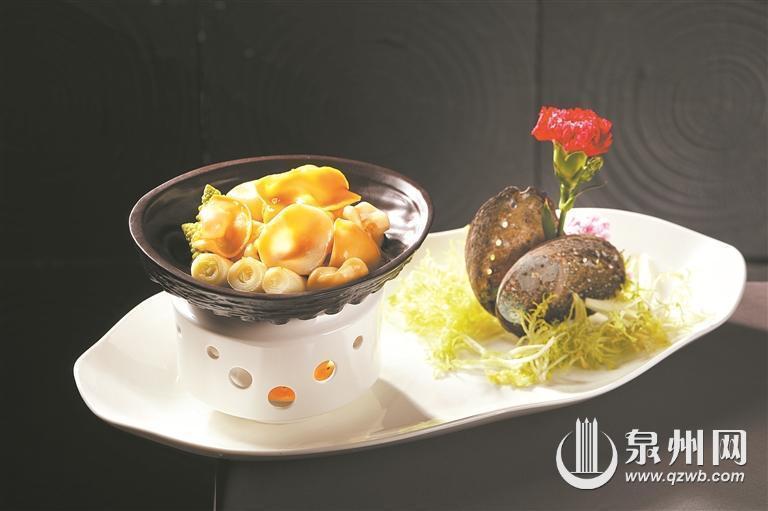
Scallion Oil Abalone (A Seafood Delight)
For Minnan people, the essence of seafood lies in its pure, natural flavors. With access to the freshest seafood, Quanzhou locals cherish simplicity in preparation. The "Scallion Oil Abalone" follows a precise technique to ensure the perfect texture—slightly firm yet tender, maximizing the abalone's inherent sweetness.
Main Ingredients: Fresh abalone, bean sprouts, ginger slices, cooking wine, scallions.
Traditional Cooking Method: The abalone is cleaned and thinly sliced before being blanched in hot water with ginger and cooking wine. It is then placed atop blanched bean sprouts. Finally, hot scallion-infused oil is drizzled over the abalone, with a touch of soy sauce to enhance the flavor.
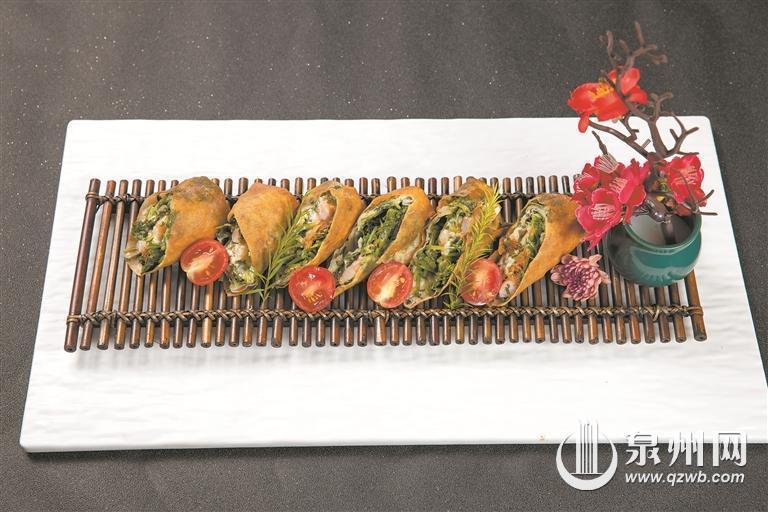
Salad Spring Rolls
——A Taste of Prosperity and Good Fortune
Spring rolls have a long history, dating back to the Eastern Jin Dynasty, where they were originally known as "spring pancakes" or "spring platters." By the Ming and Qing dynasties, advances in culinary techniques transformed these simple pancakes into the delicate, bite-sized spring rolls we recognize today. They became not only a popular folk dish but also a royal pastry. Traditionally, consuming spring pancakes or spring rolls symbolized the arrival of spring. The Sui Shi Guang Ji (Records of Seasonal Times) by Chen Yuanliang of the Song Dynasty references The Four Seasons Treasure Mirror, noting: "On the day of the beginning of spring, people eat reed shoots, spring pancakes, and raw vegetables, calling it the 'spring platter.'" This thousand-year-old custom of enjoying spring rolls at the start of spring has evolved, and today, deep-fried spring rolls are a popular street food, especially in bustling night markets.
Building upon the traditional Minnan-style spring roll, this handcrafted seafood salad roll introduces an innovative combination of ingredients, incorporating fresh seafood and creamy salad dressing to enhance its texture and flavor. While embracing a modern twist, this dish remains a hallmark of Minnan cuisine, symbolizing good fortune and prosperity.
Key Ingredients: Shrimp, chives, spring roll wrappers, salad dressing.
Authentic Preparation: Finely chop chives and mix them with seasoned shrimp. Lay out a spring roll wrapper, spread a layer of salad dressing, then add the filling and roll it tightly into a log shape. Deep-fry until golden brown, slice, and serve.
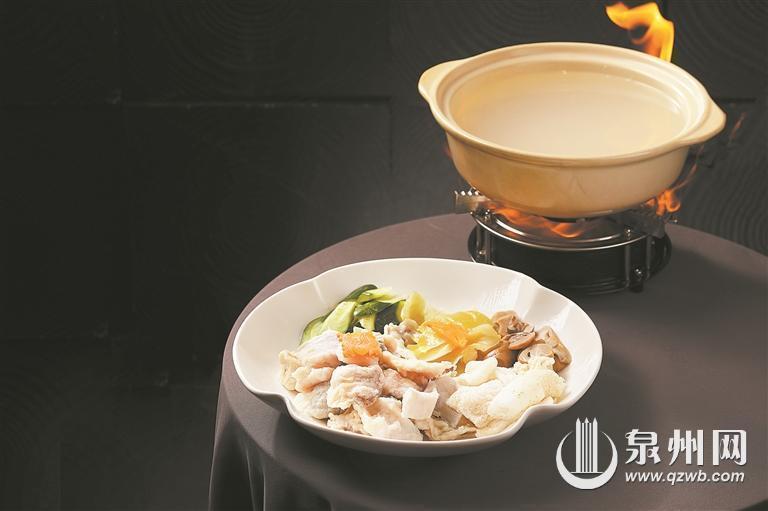
Deep-Sea Soup——Mazu's Maritime Heritage
In ancient times, before the advent of modern navigation technology, fishermen faced unpredictable and often perilous sea conditions. In their quest for safety, they turned to divine protection, placing their faith in a legendary sea goddess known as Mazu. Revered as the guardian of maritime voyages, Mazu was believed to guide sailors safely across treacherous waters and provide miraculous rescue in times of danger. For centuries, coastal communities have honored her, upholding traditions that celebrate her divine intervention and blessings.
Inspired by the grand sea parades dedicated to Mazu, this dish—Deep-Sea Soup—blends the rich heritage of Minnan-style soups, such as beef soup (niu rou geng), oyster soup (hao geng), and mackerel soup (ma jiao geng). Among these, the mackerel soup holds a distinct coastal charm. Infused with bamboo fungus, straw mushrooms, and preserved mustard greens, the broth boasts a refreshing and umami-rich flavor that lingers delightfully on the palate.
Key Ingredients: Mackerel, bamboo fungus, straw mushrooms, preserved mustard greens.
Authentic Preparation: Select fresh mackerel, remove the head, gut, and clean thoroughly. Debone and slice the fillet into thin pieces. Marinate with light soy sauce, white pepper, and salt, then coat evenly with sweet potato starch. Bring water to a gentle simmer, cook the marinated fish slices, and add the pre-cut vegetables. Let the soup blend harmoniously before serving.
